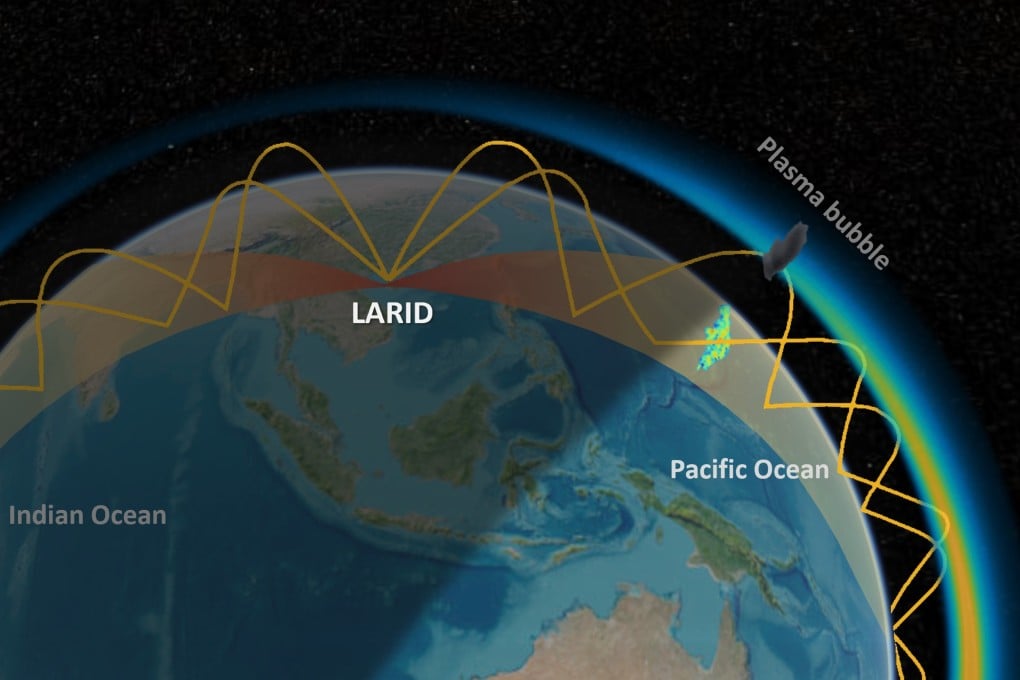Advertisement
China’s super-radar detects plasma bubble over the pyramids in Giza
The powerful LARID radar in Hainan, China, can detect plasma bubbles in Earth’s upper atmosphere up to 9,600km away
Reading Time:3 minutes
Why you can trust SCMP
17

Stephen Chenin Beijing
With the aid of the world’s most powerful radar of its kind, Chinese scientists have detected plasma bubbles appearing over both the Egyptian pyramids and the Midway Islands, almost simultaneously.
Equatorial plasma bubbles are anomalous weather phenomena in low-latitude regions, caused by the sudden disappearance of a large number of charged particles in the ionosphere – part of the Earth’s upper atmosphere.
Advertisement
Resembling a bubble, this electron-depleted region can play havoc with GPS positioning devices and can also interrupt satellite communications. And they can reach sizes that are hundreds of kilometres in diameter.
But thanks to the low latitude long range ionospheric radar (LARID), built last year, China has become the first country in the world able to detect these plasma bubbles on radar.
Advertisement
On August 27, the Institute of Geology and Geophysics, a subsidiary of the Chinese Academy of Sciences in Beijing, posted on its website the test results of the largest radar detection of plasma bubbles to date.
These plasma bubbles, triggered by a solar storm, appeared clearly on China’s radar screens from November 4-6 last year, with the farthest detectable radar echoes returning from North Africa and the central Pacific. By analysing these signals, scientists not only observed the detailed formation process of the plasma bubbles but also tracked their movement in real-time.

Advertisement